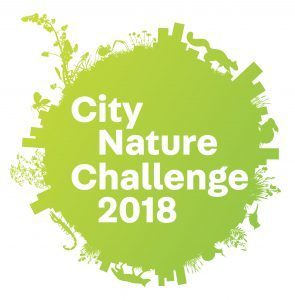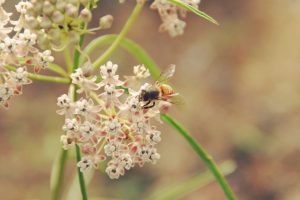Ever sifted through wildlife or habitat data in Los Angeles? Maybe you have, maybe you haven’t, but as someone who has, I’ll tell you that it’s spotty. That’s often due to the prohibitive cost involved with formal habitat and species data collection.

But, we in Los Angeles have a global biodiversity hotspot to protect, so the Natural History Museum’s Community Science group (@nhmla) thought of another approach. Seven years ago, their staff person, Lila Higgins, collaborated with the California Academy of Sciences in San Francisco to invent a fun, community-oriented way to totally turn urban biodiversity data gathering on its head.
It’s called the City Nature Challenge, which is a fun-spirited event where cities compete against each other to see who can make the most observations of nature, who can find the most species, and who can engage the most people. It uses social media (check out #CityNatureChallenge and #NatureinLA) and the iNaturalist app to make science observation easy and accessible for anyone who wants to participate.
The City Nature Challenge has grown from just Los Angeles and San Francisco to sixteen cities last year to sixty-five cities across the globe joining the community science fun this year! Check out this map of all cities to see who we’re going to beat—I mean—challenge.
Along with our friends at Mayor Garcetti’s Chief Sustainability Office, we will be hosting a Bioblitz on April 30th –the last day of the 2018 City Nature Challenge. Join us at the Civic Center/Grand Park Metro station on Hill Street (between 1st & Temple St) at 11 am for a lunchtime event of observing nature all around us in the heart of downtown Los Angeles. We’ll fan out across Grand Park, make observations, and help Los Angeles win the 2018 City Nature Challenge.
If you can’t join us, do the City Nature Challenge on your own anytime between April 27 and 30. Just follow these simple steps:
- Find Wildlife
It can be any plant, animal, fungi, slime mold, or any other evidence of life (scat, fur, tracks, shells, carcasses!).

- Take a Picture of What you Find
Be sure to note the location of the critter or plant.
- Share Your Observations
Upload your findings through iNaturalist (either mobile or desktop) or by posting to social media with #NatureInLA
To keep tabs on the global competition, follow @CitNatChallenge on Twitter. If you want tips from the pros at Natural History Museum on how to photograph wildlife, check out this guide.
Kristen Torres Pawling, Los Angeles County Chief Sustainability Office
This post originally appeared on the Department of Regional Planning’s Significant Ecological Areas Program blog.
